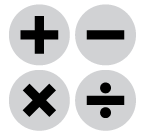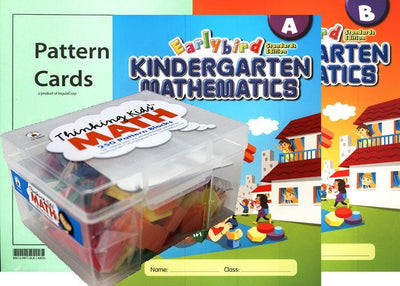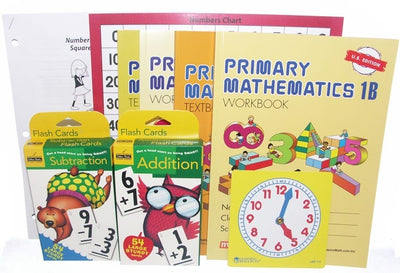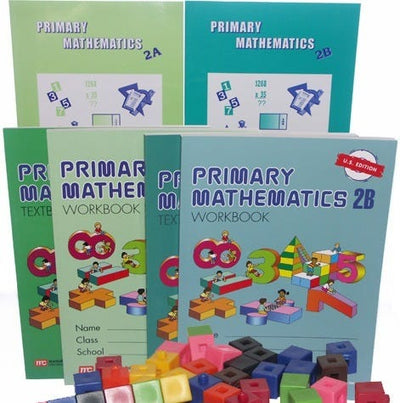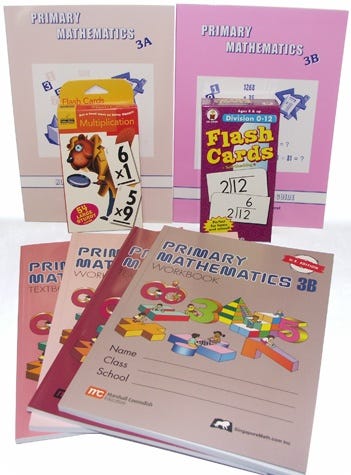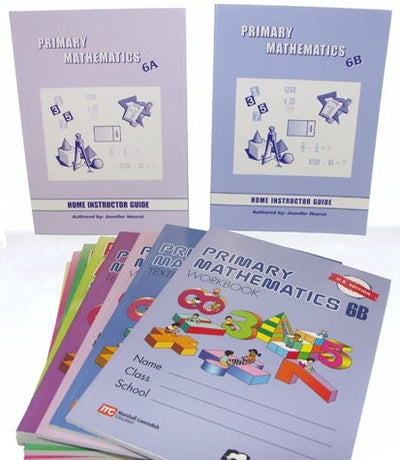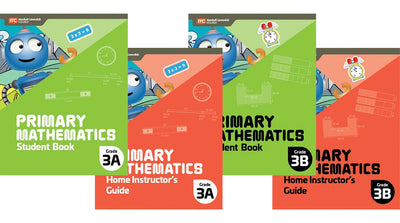Singapore Math
Homeschool Math Curriculum
Singapore is extremely clear, highly logical and sequential, with a strong focus on mental math. Students get the appropriate amount of practice without excessive repetition. Challenging word problems build thinking skills and students apply math in a variety of situations. The program teaches geometry throughout.
When the International Association for the Evaluation of Educational Achievement tests the relative strengths and weaknesses of various programs, Singapore students consistently rank #1. This method's distinguished record in international competition and the enthusiastic recommendations of customers convinced us to add the program to our math offerings.
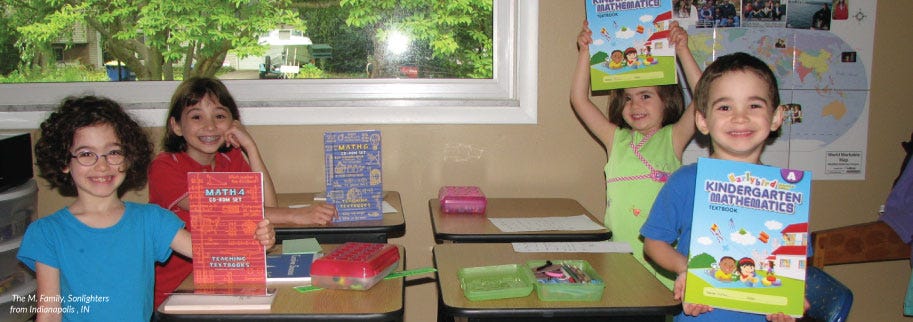
Shop By Level
Browse all Singapore Math programs, from kindergarten through sixth grade.
Learn More
Learn more about Singapore Math, the advantages and disadvantages of the program, and what makes it unique.
Singapore Primary Math Programs
Each year of Singapore Primary Math (K-6) includes two full-color textbooks and two black-and- white workbooks. Sonlight has also developed unique Home Instructor’s Guides for the Primary Math programs 2A-6B. (Due to the simplicity of the math, lower levels have no guide.) The guides bridge the gap between textbook and workbook. We lay it all out for you: concepts you’ll cover, pages you’ll reference, and numerous exercises to reinforce the concepts you’re teaching.
Due to restrictions by the publisher, Singapore Math doesn’t qualify for Sonlight discounts.
$119.00
$78.53
$136.79
$115.78
$113.05
$105.00
$104.80
Singapore Primary Math 2022 Edition Programs
This edition uses the same approach as previous Primary Mathematics editions but features entirely new content and lesson structures.
Due to restrictions by the publisher, Singapore Math doesn’t qualify for Sonlight discounts.
Shop All Singapore Math Products
Visit our Singapore Math store page to shop individual Singapore products, manipulatives, workbooks, and more.
